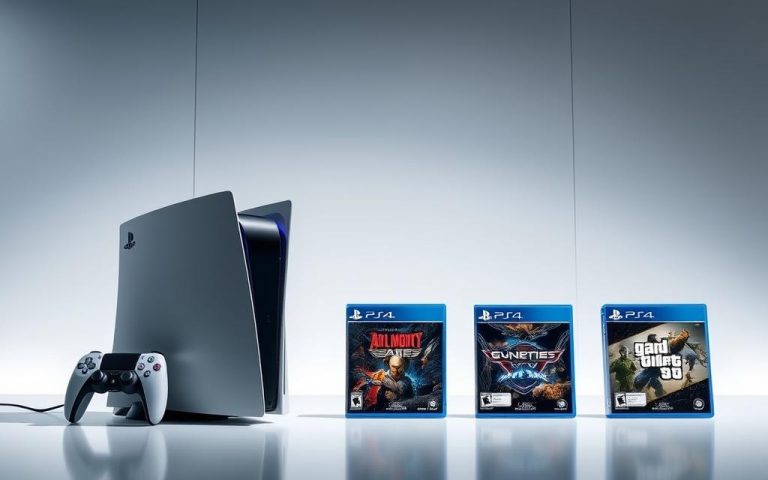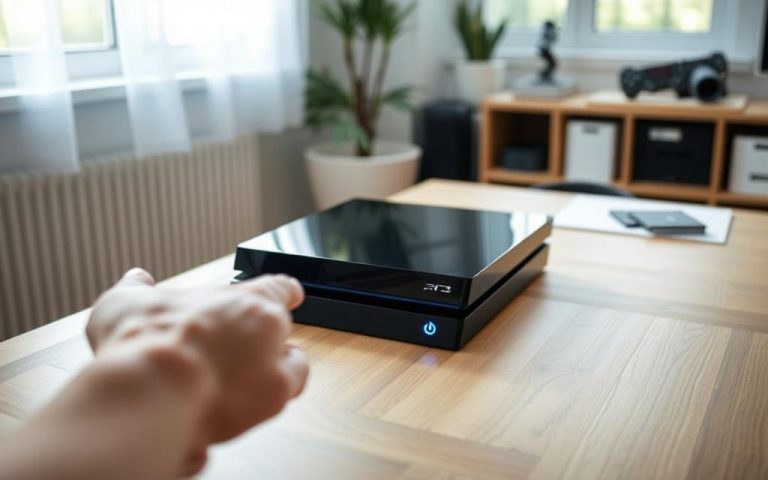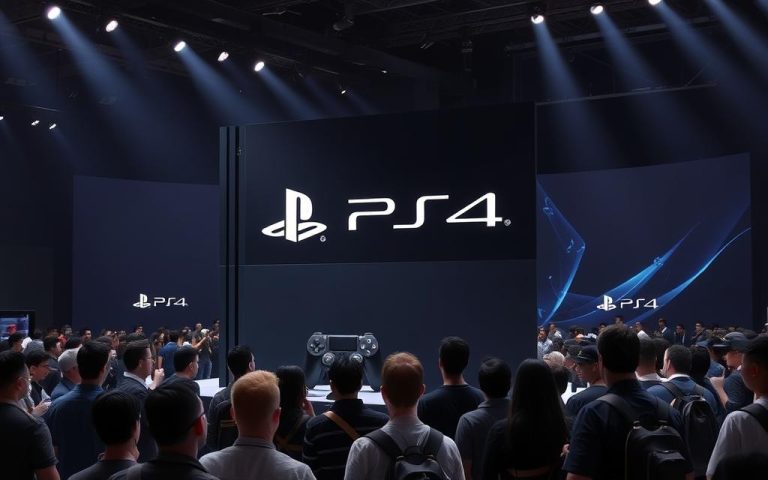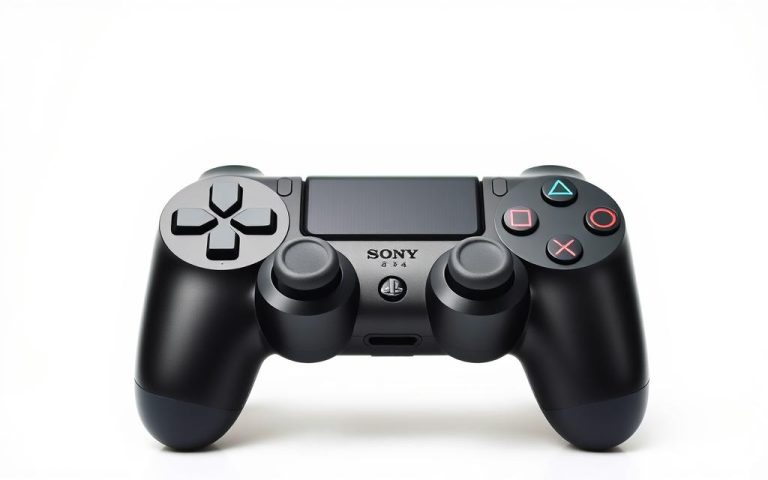Find Out When Did PS4 Come Out and Its Release Date
The PlayStation 4 (PS4) is a home video console developed by Sony Interactive Entertainment, announced as the successor to the PlayStation 3 in February 2013.
It was launched on November 15, 2013, in North America, followed by releases in Europe, South America, and Australia on November 29, 2013, and in Japan on February 22, 2014. The release date marked the beginning of a new era in gaming.
The console was designed to revolutionize the gaming experience with its advanced hardware and innovative features, offering a wide range of games that appealed to diverse audiences.
The Birth of PlayStation 4: Development Timeline
Sony’s journey to creating the PlayStation 4 began several years before its release. According to Mark Cerny, the lead architect, the development of Sony’s fourth video game console started as early as 2008. This marked the beginning of a long process that would eventually lead to the creation of a revolutionary gaming system.
Early Development Beginnings in 2008
The development process was initiated with a focus on learning from the challenges faced by the PlayStation 3. The PS3 had been launched after months of delays, putting Sony almost a year behind Microsoft’s Xbox 360. Sony Computer Entertainment Europe CEO Jim Ryan emphasized the importance of avoiding similar mistakes with the PS4. The initial phase involved designing a system that would be more developer-friendly, moving away from the complex Cell microarchitecture of the PS3 to an x86-64 architecture.
Learning from PS3’s Challenges
Sony learned valuable lessons from the PS3’s challenging launch and production delays. The company worked closely with game developers like Bungie to improve the controller design, particularly for shooting games. This collaboration was crucial in making the PS4 a more appealing platform for developers. In 2012, Sony began shipping “Orbis” development kits to game developers, which consisted of modified PCs running AMD Accelerated Processing Unit chipsets.
| Development Kit | Description | Year Released |
|---|---|---|
| Orbis | Modified PC running AMD Accelerated Processing Unit chipset | 2012 |
The Road to PlayStation Meeting 2013
The final stages of the PS4’s development culminated in the PlayStation Meeting 2013, held in New York City. On February 20, 2013, Sony officially unveiled the PS4 to the world, showcasing the console’s capabilities and demonstrating real-time footage of games in development. This event marked a significant milestone in the PS4’s journey, setting the stage for its eventual release later that year.
The development of the PlayStation 4 was a meticulous process that involved significant improvements over its predecessor. By focusing on a more developer-friendly console and collaborating with major game developers, Sony created a system that would revolutionize the gaming industry.
When Did PS4 Come Out: Global Release Dates
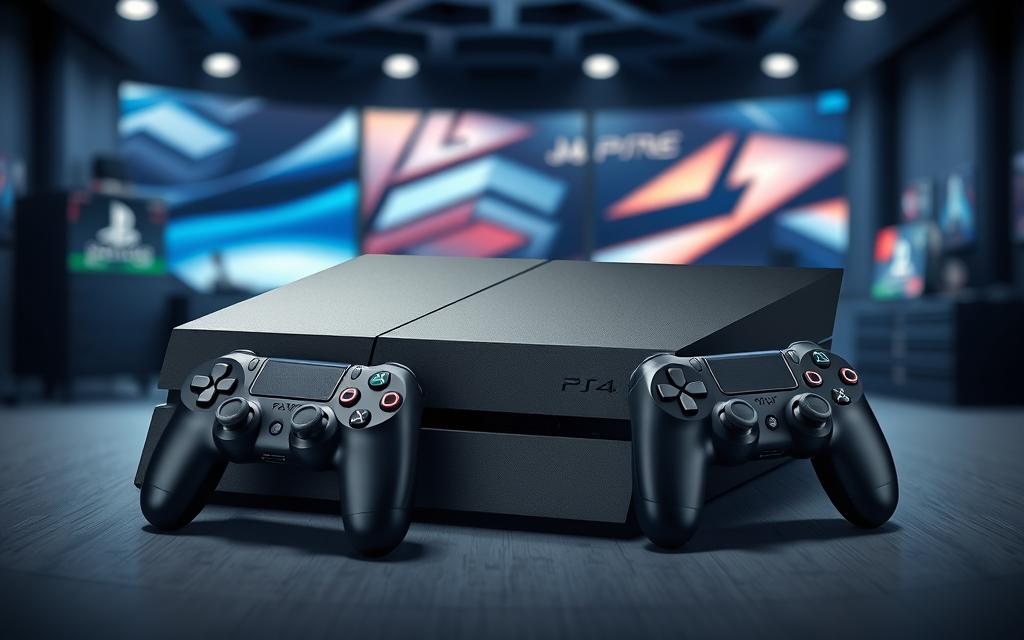
As the PS4 prepared to take the gaming world by storm, its global release dates were eagerly awaited. The console’s launch was a significant event, marking a new era in gaming technology.
North American Launch
The PS4 was first released in North America on November 15, 2013, in the United States and Canada. This launch marked the beginning of the console’s global rollout.
The North American launch was a huge success, with the console selling over 1 million units in its first day.
European and Australian Release
Just two weeks after the North American launch, the PS4 was released in Europe and Australia on November 29, 2013. This release further expanded the console’s global reach.
The European and Australian release was also well-received, with many retailers reporting high demand for the console.
Japanese Debut
The PS4 was released in Japan on February 22, 2014, at a price of ¥39,980. Although this was a relatively delayed launch compared to previous PlayStation consoles, the PS4 still managed to gain significant traction in the Japanese market.
Chinese Market Entry
In May 2014, Sony finalized a deal with the Chinese government to sell its products in mainland China. The PS4 was the first product to be released, marking a significant expansion into a previously restricted territory.
Sony CEO Kazuo Hirai noted that the Chinese market had huge potential for video game products, and the company was confident that it could replicate the PS4’s global success in China.
The PS4’s global release was a resounding success, with the console selling millions of units worldwide. Its more straightforward architecture allowed Sony to better keep pace with demand, making the system more readily available worldwide.
The Original PlayStation 4 Hardware Specifications
At the heart of the PS4 was a custom AMD Accelerated Processing Unit (APU), a significant departure from the hardware architecture of its predecessor. This APU combined a central processing unit (CPU) and graphics processing unit (GPU) on a single chip, along with other components like a memory controller and video decoder.
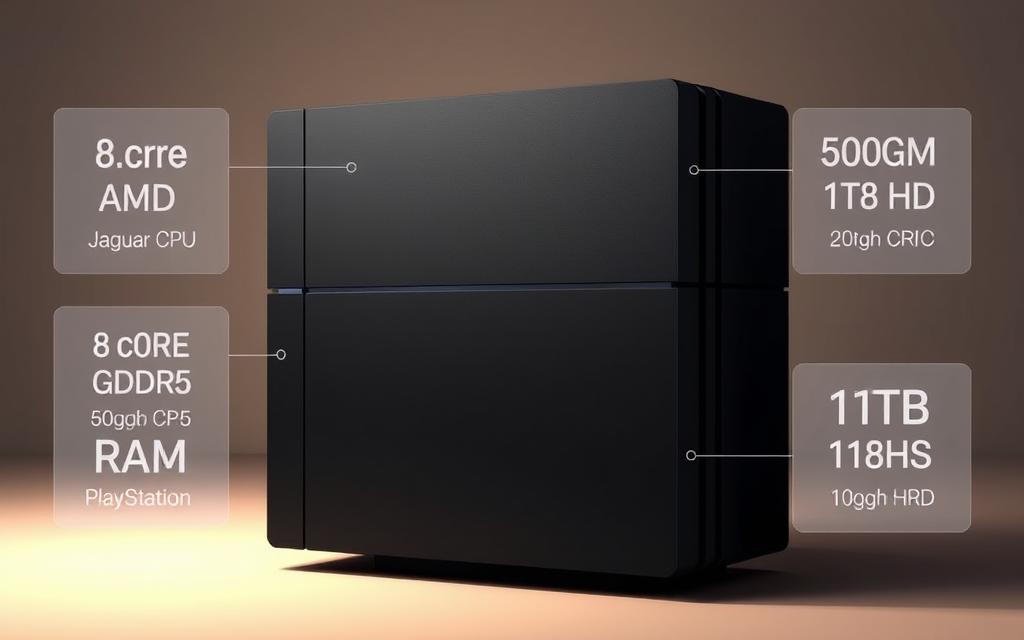
Processing Power and Architecture
The PS4’s CPU consisted of two 28 nm quad-core Jaguar modules, totaling 8 64-bit x86-64 cores, with 7 cores available for game developers to utilize. This x86-64 architecture was praised by AMD’s John Taylor as “by far the most powerful APU we have built to date” in February 2013. The GPU, comprising 18 compute units, delivered a theoretical peak performance of 1.84 TFLOPS, significantly enhancing the console’s graphical capabilities.
As Mark Cerny, lead system architect of the PS4, noted, “The x86-64 architecture was a key factor in the PS4’s design, offering developers a familiar platform to work with.” This familiarity was expected to accelerate game development and improve overall performance.
Memory and Storage Capabilities
The PS4 boasted 8 GB of GDDR5 RAM, a substantial increase from the PS3’s 256 MB of RAM. This memory was capable of running at a maximum clock frequency of 2.75 GHz (5500 MT/s), providing a maximum memory bandwidth of 176 GB/s. The console came with a 500 GB hard drive, which users could upgrade. Later, a system software update enabled support for external USB hard drives up to 8 TB, offering users flexibility in storage options.
The significant increase in RAM was a crucial factor in the PS4’s longevity, allowing developers to create more complex and visually appealing games.
Connectivity and Multimedia Features
The PS4 offered a range of connectivity options, including Wi-Fi, Ethernet, Bluetooth, and USB 3.0 ports, as well as HDMI output supporting up to 1080p resolution. The console was capable of Blu-ray and DVD playback, and it supported digital media playback via USB and DLNA. Notably, the PS4 did not support CD playback, reflecting the changing landscape of media consumption.
As Sony emphasized, the PS4 was designed not just as a gaming console but as a multimedia device, integrating seamlessly into users’ living rooms.
PlayStation 4 Launch Price and Initial Bundles
Sony launched the PlayStation 4 with a competitive pricing strategy to outdo its rival, Xbox One. The base model of the PS4 was priced at $399 in North America, €399 in Europe, and £349 in the UK. This pricing was a strategic move, considering Microsoft’s Xbox One was launched at $499 in North America, making the PS4 a more affordable option for gamers.
Base Console Pricing Strategy
The PS4’s launch price was not only competitive but also reflected Sony’s focus on making the console accessible to a wider audience. By pricing it $100 less than the Xbox One, Sony capitalized on Microsoft’s higher price point and controversial policies regarding game sharing and online requirements. The lower price point of the PS4 was a significant selling point, attracting gamers who were looking for a more affordable next-generation console.
Regional Price Differences
Regional price variations were influenced by factors such as taxes, import duties, and regional market strategies. For instance, the UK price of £349 was lower than the North American and European prices. These differences highlight the complexities of global pricing strategies in the tech industry.
| Region | Launch Price |
|---|---|
| North America | $399 |
| Europe | €399 |
| UK | £349 |
Special Launch Bundles and Offers
Sony offered various launch bundles that included games and accessories, providing additional value for early adopters. Some of the notable bundles were the PS4 and Killzone: Shadow Fall Bundle ($449.99), the Knack and PS Camera bundle ($459.99), and the Battlefield and PS Camera bundle ($559.99). These bundles not only enhanced the gaming experience but also increased the average purchase price and attachment rate for games and accessories.
In conclusion, the PS4’s launch pricing strategy and initial bundles played a crucial role in its market success. By offering a competitively priced console and attractive bundles, Sony was able to capture a significant share of the gaming market.
The DualShock 4 Controller: A Revolutionary Design
The DualShock4 controller marked a significant evolution in gaming technology, building upon the legacy of its predecessors while introducing innovative features that enhanced the gaming experience.
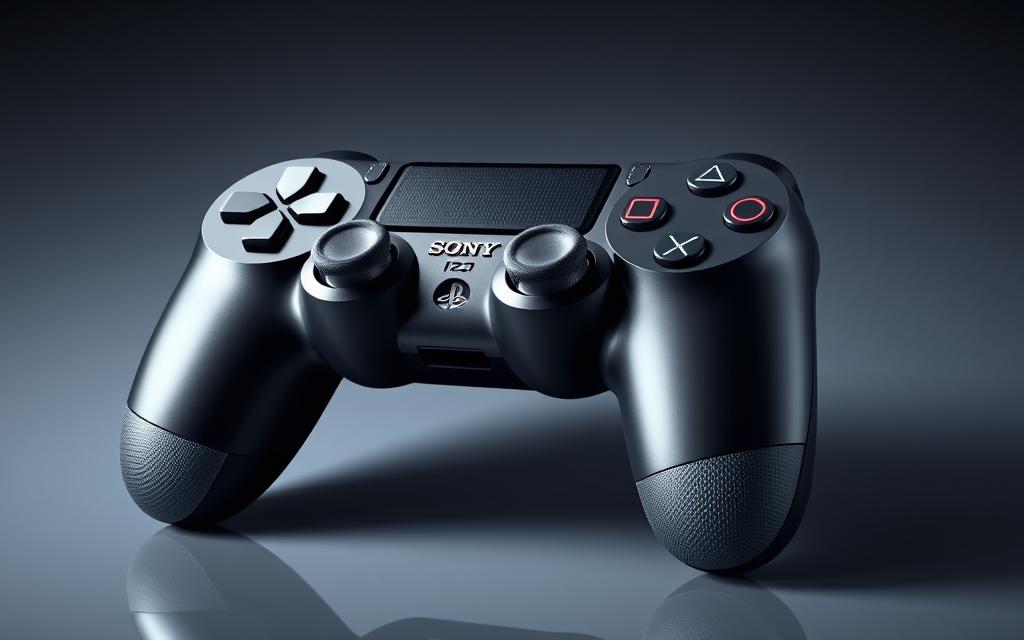
New Features and Improvements
The DualShock4 maintained the familiar DualShock lineage while incorporating several design refinements. The analog sticks were given a concave design, similar to the Xbox 360 controller, improving thumb comfort. The triggers and shoulder buttons were redesigned for better ergonomics, and the D-pad was angled to provide a resting space for the thumb. The hand grips were made thicker and featured microtexturing for improved grip.
A significant addition was the touchpad, capable of detecting up to two simultaneous touch presses and functioning as a clickable button. This opened new possibilities for game developers, allowing for more interactive and immersive experiences.
The Share Button and Social Integration
The DualShock4 introduced a Share button, replacing the traditional Select button. This feature provided instant access to the PS4’s social features, including screenshot capture, video recording, and live streaming capabilities. The Share button was designed to facilitate social sharing and community engagement, making it easier for players to share their gaming moments.
Light Bar and Motion Tracking Capabilities
The controller featured a light bar that served a dual purpose: it enabled the PlayStation Camera to track the controller’s motion and provided visual feedback within games. This feature was particularly useful in multiplayer games, where the light bar could indicate player health or character identification.
The DualShock4 also included a built-in speaker and headphone jack, enhancing immersion in games that utilized these features. The improved motion sensing capabilities further contributed to a more engaging gaming experience.
The design of the DualShock4 influenced the Remote Play functionality with the PlayStation Vita and other devices, allowing players to continue their PS4 gaming experience away from the television. This feature expanded the console’s versatility, making it possible to enjoy PS4 games on other compatible devices.
PlayStation 4 Launch Titles and Early Game Library

The variety of games available at the PS4’s launch helped to attract a wide range of gamers. The console’s early game library was diverse, featuring both popular franchises and new intellectual properties.
Day One Games and Exclusives
Sony’s first-party exclusives, such as Knack and Killzone: Shadow Fall, were designed to showcase the PS4’s technical capabilities and new controller features. These titles demonstrated the console’s power and provided a unique gaming experience.
Third-Party Support at Launch
The PS4 also had strong support from third-party developers, with titles like Assassin’s Creed IV: Black Flag, Call of Duty: Ghosts, and FIFA 14 available on day one. These established franchises helped drive initial console adoption and appealed to fans of the respective series.
Digital Marketplace Offerings
The PlayStation Store offered a range of digital titles at launch, including indie games and free-to-play options. This reflected Sony’s increased focus on independent developers and provided gamers with a variety of choices beyond traditional retail games.
The balance between new intellectual properties and established franchises in the PS4’s early library helped to appeal to both new and returning PlayStation gamers. The console’s launch library positioned the PS4 competitively against its main rival, the Xbox One, and exclusive content deals for multi-platform games factored into the console’s early appeal.
PlayStation 4 System Software and User Interface
At the heart of the PS4 lies ‘Orbis OS,’ a customized operating system built on FreeBSD 9. This foundation allows for a robust and feature-rich user experience. The PS4’s system software is designed to be intuitive and socially connected, enhancing the overall gaming experience.
Customizable Interface
The PlayStation Dynamic Menu is a key feature of the PS4’s interface, offering various color schemes and a horizontal bar of large icons for easy access to games, apps, and social features. This customizable menu allows players to personalize their experience, making it more enjoyable and user-friendly.
The interface displays the player’s profile, recent activity, notifications, and other details, including unlocked trophies. It supports multiple user accounts, each with its own pass-code, ensuring privacy and security.
Social Features and Integration
The PS4’s social features are robust, allowing for seamless integration with Facebook profiles and the ability to share real names with friends or maintain anonymity when desired. The default home screen features real-time content from friends, keeping users connected and informed.
The “What’s New” activity feed is a centralized location for social notifications, including shared media, recently played games, trophy unlocks, and more. This feature keeps players engaged with their community and up-to-date on their friends’ activities.
Multimedia Capabilities
At launch, the PS4 offered impressive multimedia capabilities, including Blu-ray and DVD playback, as well as streaming services like Netflix and Amazon Prime Video. Users could also play media files from USB drives and DLNA servers, enhancing the console’s utility beyond gaming.
| Feature | Description |
|---|---|
| Blu-ray/DVD Playback | Support for Blu-ray and DVD playback, offering high-quality video entertainment. |
| Streaming Services | Access to popular streaming services like Netflix and Amazon Prime Video. |
| Media Playback | Ability to play media files from USB drives and DLNA servers. |
The PS4’s system software and user interface were designed to be highly functional and user-friendly, making it a versatile entertainment device. The ability to share content and connect with friends enhanced the overall experience, setting a new standard for console gaming.
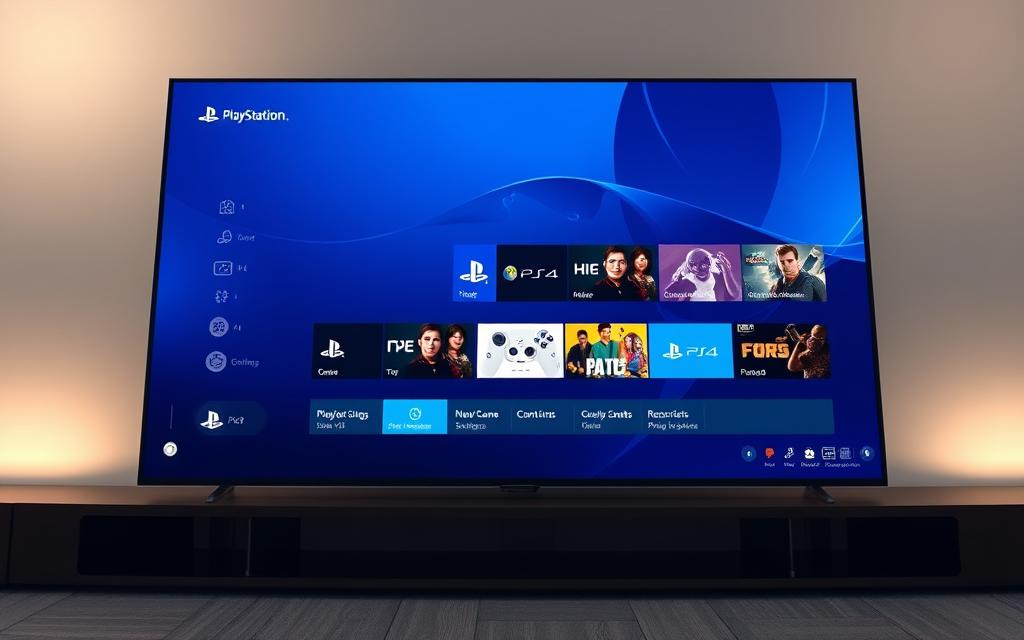
PlayStation Network Services on PS4
With the introduction of the PS4, Sony Interactive Entertainment expanded its PlayStation Network services, offering a more comprehensive entertainment platform. The PS4 allowed users to access a variety of free and premium PlayStation Network (PSN) services, enhancing the overall gaming experience.
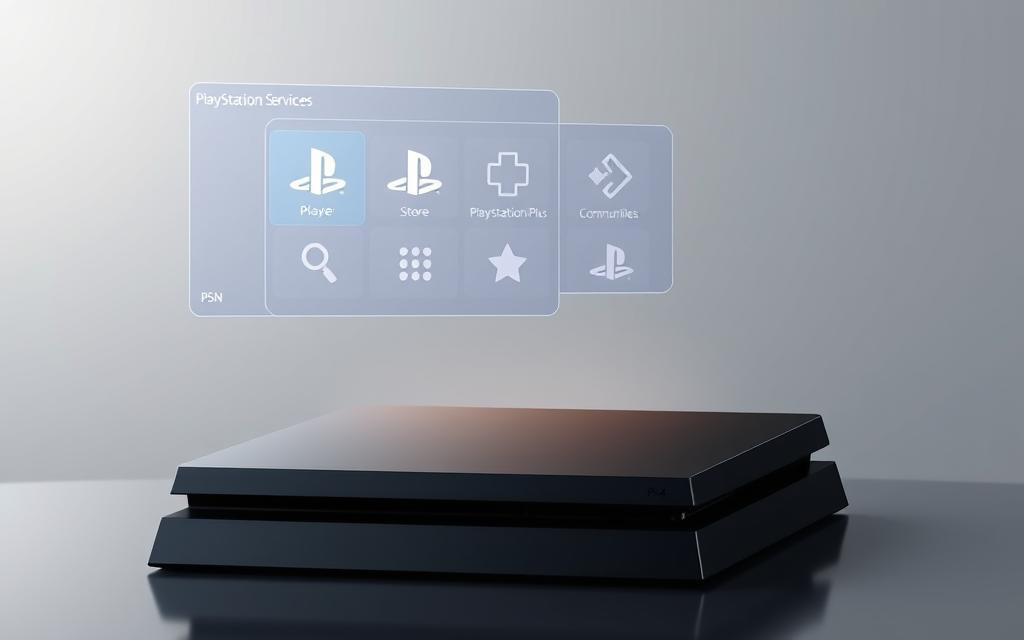
Evolution of PlayStation Plus
PlayStation Plus underwent a significant transformation with the PS4. It transitioned from an optional premium service to a requirement for online multiplayer gaming. This change underscored the value of PlayStation Plus, which included benefits such as monthly free games, exclusive discounts, and cloud storage for game saves. The service became more integral to the PS4 experience, encouraging user engagement and loyalty.
Enhancements to the PlayStation Store
The PlayStation Store was also revamped on the PS4, featuring improved navigation, personalized recommendations, and streamlined purchasing processes. These enhancements made it easier for users to discover and purchase new games and other content, directly impacting the console’s system usability.
Online Gaming Infrastructure
Sony invested heavily in improving the online gaming infrastructure for the PS4, resulting in more stable connections, better matchmaking, and overall performance compared to its predecessor, the PS3. This investment paid off, as players enjoyed a smoother online experience, whether they were playing cooperatively or competitively. The improved infrastructure also facilitated the share feature, allowing players to easily share screenshots and video clips of their gaming moments on social media platforms.
The PS4’s PlayStation Network services played a crucial role in establishing the console as a major player in the gaming industry. By enhancing online features, Sony Interactive Entertainment created a robust ecosystem that supported a wide range of gaming and entertainment needs.
First-Year Sales Performance and Market Reception
The PS4’s launch sales were unprecedented, reaching 1 million units globally within the first day. This remarkable achievement marked the beginning of a successful console lifecycle for Sony. The PlayStation 4 not only met but exceeded expectations, demonstrating a strong market demand.
Record-Breaking Launch
In its first 24 hours, the PS4 sold 1 million units worldwide, setting a new record and surpassing the launch sales of its predecessor, the PS3. Within two months, the number of consoles sold globally rose to 4.2 million, significantly outpacing the PS3’s sales of 3.6 million units during a comparable period. This rapid sales trajectory underscored the PS4’s appeal and its potential for long-term success.
| Console | First 24 Hours Sales | First 2 Months Sales |
|---|---|---|
| PS4 | 1 million units | 4.2 million units |
| PS3 | Less than 1 million units | 3.6 million units |
Outperforming the Competition
The PS4’s performance was particularly notable when compared to its main competitor, the Xbox One. Sony’s clearer messaging, lower price point, and focus on gaming helped establish an early lead in the console race. The Xbox One struggled to catch up, selling roughly half as much as the PS4 during their initial launch periods.
Critical Acclaim
Reviewers praised Sony for acknowledging consumer needs, embracing independent game development, and avoiding restrictive digital rights management schemes. The PS4’s strong first-year performance and positive critical reception established momentum that continued throughout the console’s lifecycle, eventually leading to nearly 36 million units sold by 2016.
The success of the PS4 was not limited to its sales figures; it also recaptured the market enthusiasm last seen during the PlayStation 2 era, reestablishing Sony’s dominant position in the console market. The console’s success can be attributed to its robust games lineup and innovative features, making it a beloved console among gamers worldwide.
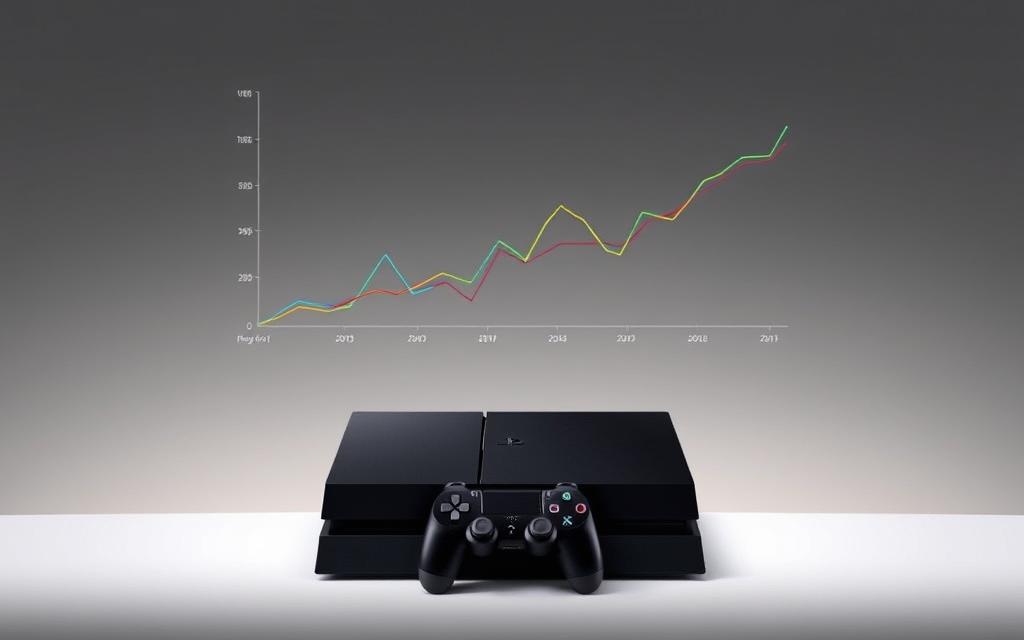
The Introduction of PlayStation 4 Slim
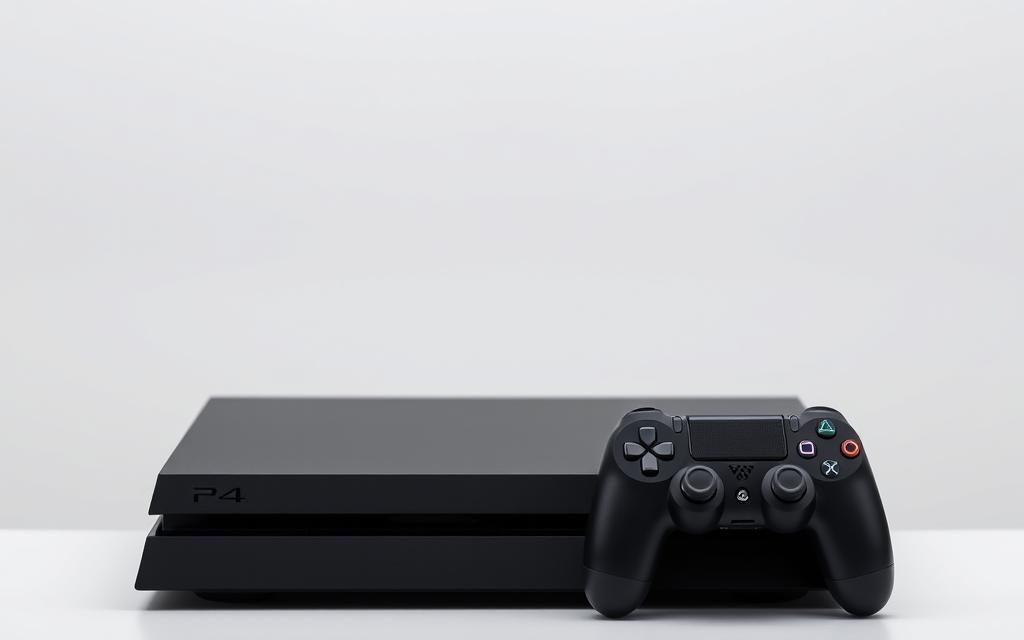
Approximately three years after the original PS4’s launch, Sony introduced the PS4 Slim, a more compact and efficient version of their popular gaming console. Released on September 15, 2016, the PS4 Slim was part of Sony’s traditional console revision strategy, aimed at refreshing their hardware mid-cycle.
Release Date: September 15, 2016
The PS4 Slim was launched on September 15, 2016. This strategic release helped Sony maintain momentum in the gaming market, particularly as it coincided with the launch of the more premium PS4 Pro model. For more details on the announcement, you can visit the official PlayStation blog.
Hardware Changes and Improvements
The PS4 Slim boasted several significant hardware changes and improvements over the original PS4. It featured a 40% smaller footprint, making it more compact and appealing to consumers with limited space. The new model was also 10% lighter and consumed 8% less energy than its predecessor, leading to a quieter operation and reduced environmental impact.
In terms of connectivity, the PS4 Slim upgraded to USB 3.1 ports, offering faster data transfer rates. Additionally, it featured improved Bluetooth 4.0 and Wi-Fi capabilities (802.11ac), enhancing overall connectivity and online gaming performance.
Pricing Strategy and Market Position
The PS4 Slim launched at a competitive price point, with the 500GB model priced at $299 and the 1TB version at $349. This pricing strategy effectively replaced the original PS4, offering consumers a more affordable option without sacrificing performance. In April 2017, Sony shifted the standard offering to the 1TB PS4 Slim, providing consumers with more storage space at a still competitive price.
The introduction of the PS4 Slim helped Sony maintain sales momentum during the middle of the console’s lifecycle. By offering a refreshed model with improved efficiency and connectivity, Sony was able to attract both new consumers and those looking to upgrade from the original PS4.
PlayStation 4 Pro: The Mid-Generation Upgrade
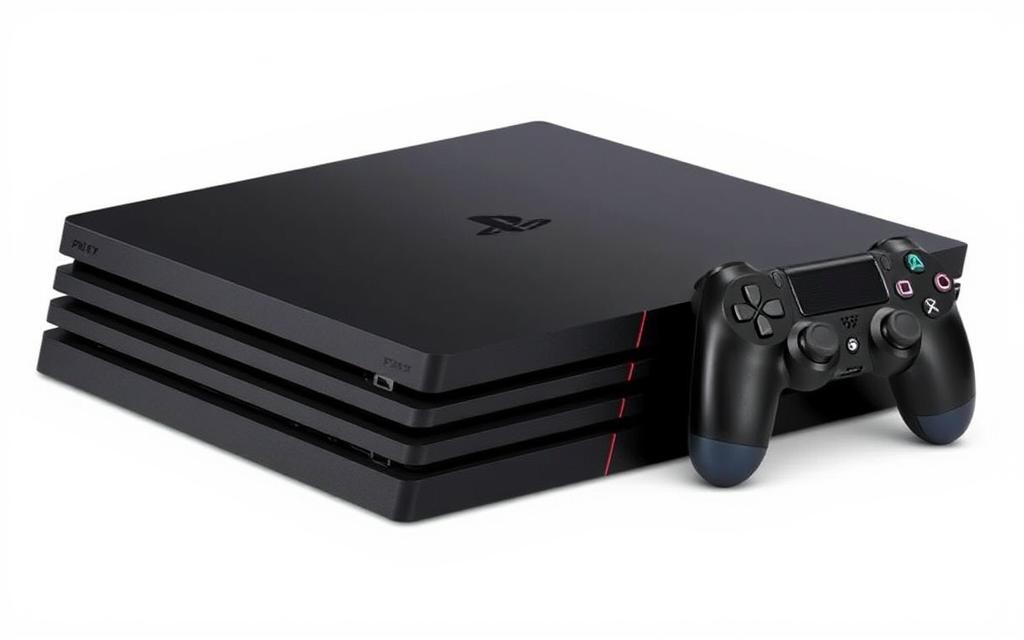
Sony’s mid-generation refresh, the PS4 Pro, brought enhanced performance and visuals to the gaming scene. Released on November 10, 2016, it was designed to extend the PS4’s lifecycle while catering to the growing 4K TV market.
Release Date: November 10, 2016
The PS4 Pro was publicly revealed on September 7, 2016. It was positioned as a premium option, priced at $399, alongside the more affordable PS4 Slim, which was priced at $299. This strategic release allowed gamers to choose between a high-performance console and a budget-friendly option.
Enhanced Performance Specifications
The PS4 Pro featured a more powerful AMD Polaris GPU, capable of 4.2 TFLOPS, compared to the original’s 1.84 TFLOPS. It also had a 31% faster CPU and increased memory bandwidth. These upgrades enabled the console to handle demanding games and applications more efficiently.
4K Gaming and HDR Support
The PS4 Pro supported 4K output, with some games rendered natively at 4K, while others were upscaled using techniques like checkerboard rendering. Additionally, it introduced High Dynamic Range (HDR) support, providing more vibrant colors and greater contrast in compatible games. This feature was also made available to standard PS4 users through a software update.
The PS4 Pro maintained full compatibility with the existing PS4 game library, ensuring that gamers could enjoy their favorite titles with enhanced performance. The console’s influence on the market was significant, establishing the concept of mid-generation upgrades that would later be adopted by Microsoft with the Xbox One X.
PlayStation VR: Expanding the PS4 Ecosystem
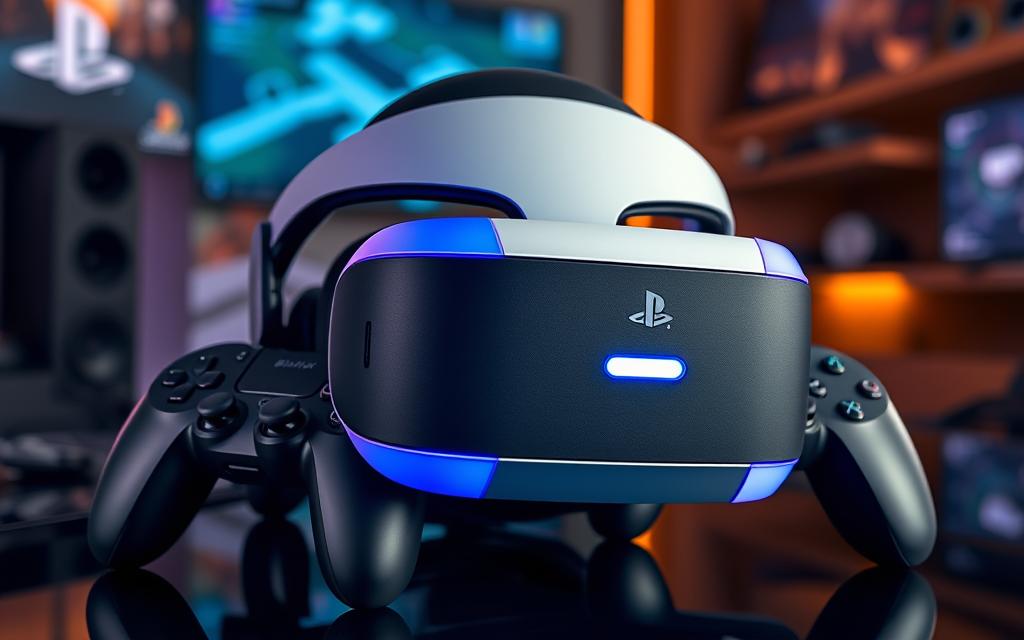
In October 2016, Sony revolutionized gaming with the release of PlayStation VR, a virtual reality system designed for the PS4 console. This innovation brought affordable VR gaming to the console market, previously dominated by high-end PC setups.
Launch and Integration with PS4
The PSVR headset was designed to integrate seamlessly with the PS4, utilizing the console’s existing hardware to power the VR experience. The PlayStation Camera played a crucial role in tracking the headset’s motion through LED lights, ensuring a smooth and immersive experience.
The integration also allowed for the use of PlayStation Move controllers, giving gamers enhanced motion controls in supported games. This compatibility breathed new life into the Move controllers, originally introduced with the PS3.
Technical Specifications and Requirements
The PSVR headset boasted impressive technical specifications, including a 1080p OLED display with a 120Hz refresh rate and a 100-degree field of view. The headset also featured built-in 3D audio processing, enhancing the overall VR experience.
To use PSVR, the PlayStation Camera was mandatory, while the PlayStation Move controllers were optional for enhanced gameplay in compatible titles.
VR Game Library Development
The PSVR game library grew significantly since its launch, starting with titles like PlayStation VR Worlds and Batman: Arkham VR. Later releases included Astro Bot: Rescue Mission and Resident Evil 7, showcasing the diversity and depth of VR gaming on PS4.
The introduction of PSVR, alongside the PS4 Pro, expanded the PlayStation ecosystem, offering enhanced VR experiences with improved performance and graphics.
PS4 Price Drops and Special Edition Consoles
As the PS4 matured, Sony adjusted its pricing strategy to maintain competitiveness in the gaming market. This strategic move was reflected in a series of price reductions across different regions.
Timeline of Official Price Reductions
The first significant price drop occurred in September 2015, when Sony reduced the PS4 price in Japan to ¥34,980. This move was followed by similar reductions in other Southeast Asian markets. In North America, the price was reduced to $349.99 (US) and $429.99 (Canada) on October 9, 2015. Europe also saw a price cut to €349.99/£299.99 in late October 2015.
| Region | Original Price | Reduced Price | Date |
|---|---|---|---|
| Japan | ¥39,980 | ¥34,980 | September 2015 |
| North America (US) | $399.99 | $349.99 | October 9, 2015 |
| Europe (UK) | £349.99 | £299.99 | Late October 2015 |
Limited Edition and Themed Consoles
Sony released various limited edition and themed PS4 consoles throughout its lifecycle. These special editions were based on popular franchises such as God of War, Spider-Man, The Last of Us Part II, and Death Stranding. These unique console models appealed to fans and collectors, adding variety to the PS4 lineup.
Holiday Bundle Strategies
Sony implemented holiday bundle strategies across different years to drive sales during crucial retail periods. These bundles combined competitive pricing with popular games, offering additional value to customers. The strategy helped maintain the PS4’s sales momentum, particularly as the console approached the end of its generation.
The PS4’s price evolution and special edition consoles played a crucial role in its continued success. By adjusting the console price and offering attractive bundles, Sony was able to stay competitive in the market.
PlayStation 4’s Impact on the Gaming Industry
The PlayStation 4’s impact on the gaming industry was profound and far-reaching. Released to critical acclaim, the PS4 was praised for its developer-friendly architecture, robust social integration features, and innovative digital distribution model. Critics and third-party studios alike lauded Sony for acknowledging consumer needs and embracing independent game development, setting it apart from competitors like the Xbox One.
New Standards for Console Gaming
The PS4 set new standards for console gaming by focusing on gaming as its primary function, unlike Microsoft’s initial multimedia-centric approach with the Xbox One. This focus influenced the direction of the entire console market, with the PS4’s developer-friendly architecture making it easier for developers to create games. The console’s hardware, based on familiar PC components, facilitated cross-platform development and impacted game development trends across the industry.
As Mark Rein, Vice President of Epic Games, noted, “Sony has been very supportive of us, and we’re very happy with the success of the PS4.” This sentiment was echoed across the industry, with many developers praising Sony’s approach to game development and distribution.
Influence on Competitor Strategies
The PS4’s success significantly influenced Microsoft’s strategy, leading to policy reversals regarding used games, always-online requirements, and a greater focus on gaming with subsequent Xbox One models. The emphasis on gaming and consumer needs demonstrated by the PS4’s design and functionality forced a shift in how competitors approached their own console strategies.
“The PlayStation 4 has been a huge success for Sony, and it’s had a major impact on the gaming industry as a whole.” – Reggie Fils-Aimé, former President of Nintendo of America.
Developer Support and Game Development Trends
Sony’s embrace of independent developers through initiatives like ID@PlayStation helped diversify the PS4’s game library and fostered innovation. The console’s architecture and development tools encouraged a wide range of games and experiences, from indie titles to major blockbusters, further enriching the gaming industry.
The PS4’s commercial success reaffirmed the viability of dedicated gaming consoles, demonstrating that there was still a strong market for high-performance, specialized hardware. As the gaming landscape continues to evolve, the influence of the PS4 on console design, game development, and industry trends remains significant.
PS4 Lifetime Sales and Market Dominance
With a total of 117.2 million units shipped as of March 31, 2022, the PS4 became one of Sony’s best-selling consoles. This achievement underscores the console’s significant impact on the gaming industry during its lifecycle.
Milestone Achievements
The PS4 reached several notable milestones throughout its lifespan. It sold its first 1 million units within 24 hours of its launch, setting a new record for the company. The console continued to perform well, eventually surpassing 100 million units sold faster than any previous console. By October 2019, the PS4 had become the second best-selling PlayStation console of all time, behind only the PlayStation 2.
Key Sales Milestones:
- Sold 1 million units within 24 hours of launch
- Surpassed 100 million units sold
- Reached 113.5 million units sold as of September 30, 2020
- Shipped 117.2 million units as of March 31, 2022
Regional Performance Analysis
The PS4 performed exceptionally well across various regions. In North America, Europe, and Japan, the console was met with significant enthusiasm. The strong lineup of games and the innovative features of the PS4 contributed to its success. The regional performance can be broken down into the following table:
| Region | Sales Performance |
|---|---|
| North America | Strong sales driven by popular titles and holiday bundles |
| Europe | Consistent demand throughout the console’s lifecycle |
| Japan | Initial slow start, but gained popularity with exclusive titles |
Comparison to Previous PlayStation Generations
The PS4 outperformed the PS3, which sold 87.4 million units, but fell short of the PS2’s record-breaking sales of 155 million units. In comparison to its main competitor, the Xbox One, the PS4 sold approximately twice as many units worldwide. The strong sales of the PS4 translated into significant software sales and PlayStation Network revenue, creating a profitable ecosystem for Sony Interactive Entertainment.
The continued support for the PS4 even after the launch of the PlayStation 5 in November 2020, with maintained production and cross-generation titles, further extended its lifecycle and reinforced its market dominance.
Conclusion: The Legacy of PlayStation 4
Sony’s PlayStation4, launched on November 15, 2013, in North America, revolutionized the gaming landscape with its innovative features and robust game library. The PS4’s impact on the gaming industry was profound, restoring Sony’s market leadership following the challenging PS3 era. With consistent hardware revisions, system software updates, and a stellar library of games, the PS4 not only captivated gamers but also set new standards for console gaming.
The journey of the PS4, from its initial release to its various iterations with the PS4 Slim and PlayStation Pro, showcased Sony’s commitment to innovation and customer satisfaction. The Remote Play functionality, allowing gamers to play on PlayStation Vita and other devices, further enhanced the console’s appeal. With over 117 million units sold, the PS4 became the second best-selling PlayStation console of all time, a testament to its success.
The PS4’s exclusive game library, featuring titles like God of War, Horizon Zero Dawn, Marvel’s Spider-Man, and The Last of Us Part II, raised the bar for narrative and technical achievement in gaming. These games, among others, contributed to the PS4’s legacy, making it a beloved console among gamers worldwide.
The success of the PS4 provided Sony Interactive Entertainment with a strong foundation for the future, influencing the design and strategy of the PlayStation5. The PS4’s emphasis on backward compatibility and system updates set expectations for future consoles, demonstrating Sony’s commitment to supporting its gaming community over time.
In conclusion, the PlayStation4 represents a special moment in gaming history, not only for its sales dominance but also for pushing the industry forward through technical innovation and compelling exclusive games. As the gaming world continues to evolve, the PS4’s legacy remains a pivotal moment in Sony’s history, reflecting a deep understanding of what gamers wanted from their home console.
FAQ
What was the original price of the PS4 at launch?
The base model PS4 was priced at 9 in North America.
What are the key differences between the PS4 and PS4 Slim?
The PS4 Slim is a more energy-efficient, redesigned version of the original PS4, with a smaller form factor and slightly different design elements.
What is the release date of the PS4 Pro?
The PS4 Pro was released on November 10, 2016.
Can I play PS3 games on the PS4?
No, the PS4 is not backwards compatible with PS3 games, although some popular titles have been remastered for the PS4.
What is the purpose of the Share button on the DualShock 4 controller?
The Share button allows players to easily share their gaming experiences on social media, upload videos, and stream gameplay.
How does the PS4’s hardware compare to the Xbox One’s at launch?
The PS4 and Xbox One had similar hardware specifications, but the PS4 had a slightly more powerful processor and more RAM.
What is PlayStation Plus, and what benefits does it offer?
PlayStation Plus is a subscription service that offers online gaming, free games, and discounts on the PlayStation Store.
Can I use my PS4 remotely using the Remote Play feature?
Yes, Remote Play allows you to play PS4 games on other devices, such as the PlayStation Vita or PC, using the Remote Play app.
How many consoles did the PS4 sell during its lifespan?
The PS4 sold over 117 million units worldwide during its lifespan.
What is the PlayStation VR, and how does it work?
PlayStation VR is a virtual reality headset that is compatible with the PS4, offering immersive gaming experiences.













